People from many places across the world (23 cities, 17 countries, all continents except Antarctica) dancing and being happy to Pharrell Williams' song "Happ...
Get Started for FREE
Sign up with Facebook Sign up with X
I don't have a Facebook or a X account

 Your new post is loading... Your new post is loading...
 Your new post is loading... Your new post is loading...

Danielle Lip's curator insight,
February 16, 2015 7:34 PM
While watching this movie I found the over idea of tradition to be quite accurate because everyone wether they are from Russia, the United States or another country has traditions that come from many years ago. These traditions tell how the people should dress, sleep, work and eat all in the eyes of God. Traditions come from a group and then are passed on for generations, everyone has some type of tradition wether it is in their family or in another community. Tradition helps the people to gain an identity for themselves so he knows and everybody else knows who he is as well as what God expects. The main focus in this movie is not only tradition but also to please and have God in mind at all cost.
Elle Reagan's curator insight,
March 22, 2015 9:18 PM
This video was nice because it had a little song that played and I thought that it showed the culture well. Before the Industrial Revolution played out, this way the way it used to be in many places. Riding horses and pulling a wooden carriage to deliver milk that had been freshly squeezed from a cow. It's funny to think that this was't that long ago and how culture can change quickly.
Bella Reagan's curator insight,
May 27, 2015 12:37 AM
Unit 3 Cultural Practices Folk Culture This video is the intro to a movie that shows the basis of this folk culture. It gives a good representation of the different elements of folk culture. Folk culture is made up of so many different elements. In the video there is music that begin stye culture being showcased. Then the man's attire and his environment. The infrastructures show the folk culture as well and so does the accent. Insight This video revealed the elements of folk culture. It tied them all together and gave a good visual and good sound to what makes up a culture. Culture consists of so much from language, to dress, to food, to music. A video really gives a good eye into what the folk culture is like in this.
Adrian Bahan (MNPS)'s comment,
August 12, 2013 7:55 PM
Sounds like Eminem, but the videos are a bit different. What is gained from using hip hop as a means of language preservation. What is lost. Did the reindeer ever convert to Christianity? Watch and find out.
|
Avery Liardon's curator insight,
March 23, 2015 9:48 PM
Unit 3: Shines insight on stereotypes that are commonly used throughout the world. Reading this article really made me think about stereotypes that are so commonly used they are considered acceptable. It's a ridiculous idea to think that all people under a culture act and behave the same way.
Emily Coats's curator insight,
March 24, 2015 12:06 PM
UNIT 3 CULTURE This article is written to compare and contrast various ways to teach young school children about global cultures. On one hand, we can relate all cultures to each other, due to their common goals and views. For example, all families around the world aim to do what's best for each other, love and cherish one another, and try their hardest to succeed economically. On the other hand, cultures are extremely different around the world, with different music, clothing, and underlying views on life. We can continue to say that popular culture has diffused so greatly, with advanced technologies and means of transportation, so it has influenced and homogenized our landscape quite a bit. Folk culture is obviously still a powerful force, but popular culture does have some effects around the world. I believe that children need to understand the importance of maintaining diversity thy preserving folk culture but they also need to acknowledge the pros and cons of the global diffusion of popular culture and how it connects us at a global scale.
Danielle Smith's curator insight,
April 12, 2015 12:21 AM
I think Teaching Cultural Empathy: Stereotypes, World Views and Cultural Difference is a helpful article for teachers to read. This article considers ideas I constantly come back to, whilst collecting resources and ideas for teaching students about cultural diversity and identity. How do I teach students, that ‘people and cultures are different all over the world’ (Dixon, 2015, April 2), but also the same? Dixon suggests that we need to teach that people and cultures worldwide are the SAME and DIFFERENT simultaneously. In this way, students can appreciate the rich diversity of cultures and societies, whilst at the same time learning values of humanity and empathy, which unite us all.
I believe by recognising and appreciating the rich cultures of students in the classroom, we can explore and learn about cultural diversity in an honest, rich and non-stereotypical way and allow students to feel valued at the same time. In addition, as students know each other, this helps them relate to ‘people from other places, who speak other languages’ and follow different religions to their own (Dixon, 2015, April 2). Furthermore, this should help increase intercultural understanding in the classroom by developing a ‘socially cohesive’ environment that ‘respects, and appreciates cultural, social and religious diversity’ (MYCEETA, p. 7).
References Dixon, S. (2015, April 2). Teaching cultural empathy: Stereotypes, world views and cultural difference. National Geographic. Retrieved April 7, 2015, http: http://blog.education.nationalgeographic.com/2015/02/04/teaching-cultural-empathy-stereotypes-world-views-and-cultural-difference/
Ministerial Council on Education, Employment, Training, and Youth Affairs. (2008, December). Melbourne declaration on educational goals for young Australians. Melbourne: Author.
mary jane james's curator insight,
April 7, 2017 2:55 PM
This video relates to my subject on religion by showing the five main religions and how they're changing the world and prospective of how people see themselves on earth.
My opinion on the video is that is good to see that all of the religions are somewhat related by where and how they were created, and also what is shown in them.
Hailey Austin's curator insight,
May 11, 2017 9:53 PM
This article relates to are class because it is talking about different religions. It states that we all have different beliefs, but we believe in a higher power. This article was interesting because it shows you how different your beliefs are to other religions. They all have a story they believe is true.

Abby Laybourn's curator insight,
December 10, 2014 1:25 PM
Although this was kind of hard to read it was interesting to see how different religions are related and where they stem from.
Emma Conde's curator insight,
May 26, 2015 9:16 PM
Unit 1 Geography: Its nature and perspectives Although the article relating to this diagram is in Russian, the diagram is not, and I found it to be a very interesting visual to not only show world religions developing on a time scale, but also because it does a very good job of showing just how many little divisions of each religion they are, and how they are all intertwined. Zooming in on the diagram, you are able to see each divide, each new branch, and each date for hundreds of sets of information.
This illustrates the theme of identification of major world religions because it simply shows the mass amounts of tiny divisions that occur in the major world religions in a simple format. This is very helpful because this would be pages of writing if you tried to write it all out.
Hye-Hyun Kang's curator insight,
January 10, 2014 12:13 AM
This shows how different religions have affected different states in the U.S. This affects certain areas in the states and their culture.
Rishi Suresh's curator insight,
January 16, 2014 12:36 PM
Khanh Fleshman's insight: This relates to Key Issue #1 because it shows the distribution of religions on a national scale. It also highlights the dominance of Christianity and Protestantism in the US.
Graham Shroyer's insight: This relates to key issue 1 because it shows the prevalence of christianity, a universalizing religion, in the US.
Vinay Penmetsa: This relates with the section, showing how Christianity is an universalizing religion, and its distribution in America.
Zahida Ashroff's Insight: This relates to Key Issue #1 because it shows the distribution and density of Protestants in the U.S. This map shows that the highest density of Protestants occur oin the South-Eastern region of the U.S.
Rishi Suresh: This relates to the distribution of denominations within America. It shows how the distribution is related to the patterns left by the original settlers. 
Miles Gibson's curator insight,
December 26, 2014 12:00 AM
Unit 3 culture This demographic relates to unit 3 because it shows how religions develop in different areas over time and pressures individual movements. It shows group organization throughout the u.s. and this is a cultural aspect of unit 3 that is very well touched upon. It is an overall demonstration of unit 3 |




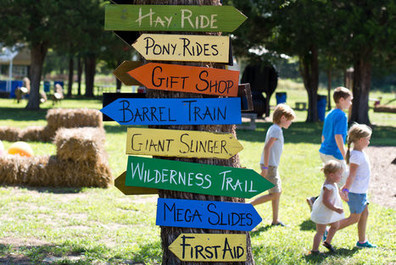
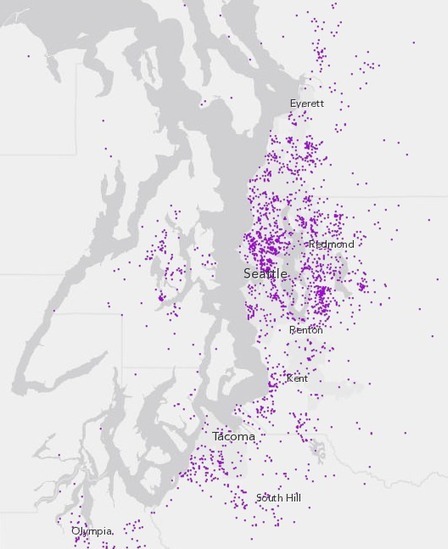
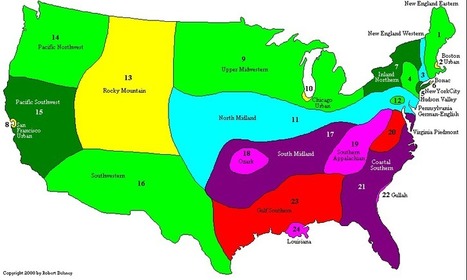



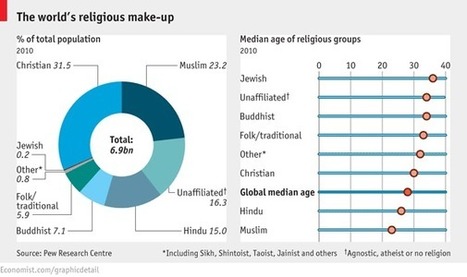
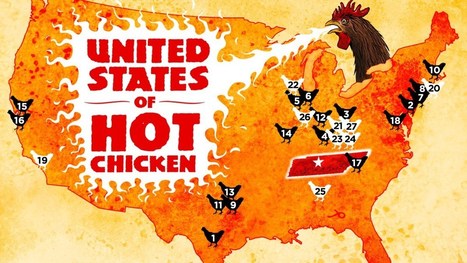

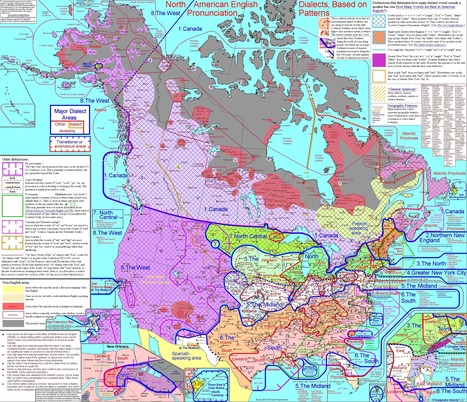




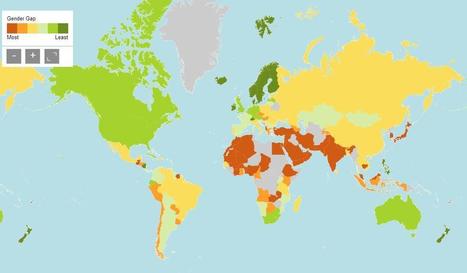
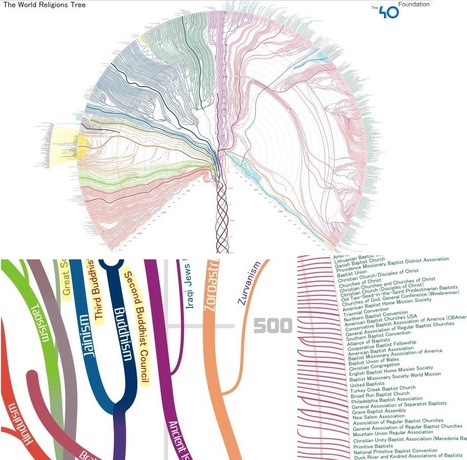
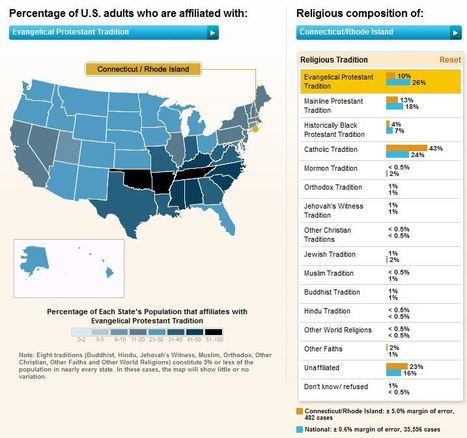





What are connections you can make to folk and popular culture